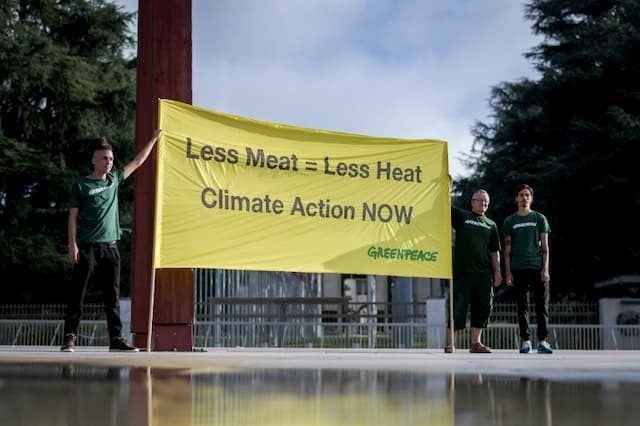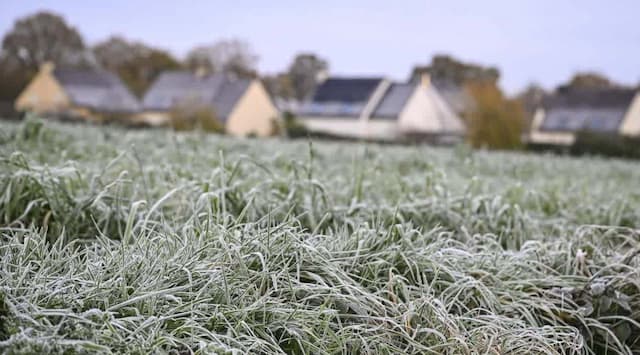Global Warming: Land Use Needs to be Rethought, Warns UN Experts

Humans have degraded a quarter of the Earth’s land surface and climate change is exacerbating this pressure, according to a report released on Thursday 8th August 2019.
To properly feed the billions of Terrans or fight against climate change and global warming? To avoid one day facing this dilemma, it is essential to rethink land use and our eating habits, warns Giec.
Read also: In 2050, the climate in Paris will be like in Canberra today according to a study
Humans have degraded a quarter of the land surface – soil erosion, desertification, deforestation, loss of biodiversity … – and climate change increases this pressure. This explosive mixture represents a threat to the food security of a growing population, which exceeds 7 billion people.
🌍 #IPCC Special Report on #ClimateChange and Land:
Land is where we live.
Land is under growing human pressure.
Land is a part of the solution.
But land can’t do it all. #SRCCL press release ➡️ https://t.co/yvthAXgk7V
SPM ➡️ https://t.co/kIjgQJt7hP pic.twitter.com/x9KxDgTJWH— IPCC (@IPCC_CH) 8 August 2019
Human pressure on land
These are the major conclusions of the Giec Special Report on “Climate Change, Desertification, Land Degradation, Sustainable Land Management, Food Security and Greenhouse Gas Flows in Terrestrial Ecosystems” unveiled Thursday 8 August 2019.
“Human pressure on land is growing, the land is part of the solution but can not do it all,” Debra Roberts, co-chair of the UN climate group, told a news conference in Geneva.
The food system as a whole generates “up to one-third of our emissions” of greenhouse gases, said Eduardo Calvo Buendia, co-president of Giec.
Time is running out, while global warming is already 1.53 ° C, double the global rise (oceans included), according to the report.
Risks for food
The risks of instability in terms of the food supply could be “high” with global warming of 1.5 ° C and “very high” at 2 ° C, explained Valérie Masson-Delmotte, co-chair of Giec.
We must act quickly, insists the IPCC, which lists a series of short-term measures, adapted to regional specificities. In addition, passages have been added to the 65-page executive summary, adopted after five days of discussion among the 195 member countries, to take into account the problem of cities and rampant urbanization.
The margin is narrow if one wants to both contain the warming and its devastating effects on the land, and properly feed a population that could exceed 11 billion people at the end of the century. According to Piers Forster, professor of climate change at the University of Leeds:
“We need to think much more deeply about how we will use each hectare. The land must be able to grow our food, provide biodiversity and fresh water, give work to billions of people and capture billions of tons of carbon.”
The IPCC has developed different scenarios to limit warming to 1.5 ° C or below 2 ° C compared to the pre-industrial period. They include land-based mitigation measures and changes in use, combining afforestation, reforestation, reduced deforestation and bioenergy.
820 million people are hungry
Scenarios requiring large land conversions (reforestation to capture CO2, fields dedicated to bioenergy …) to fight against global warming could have “undesirable side effects”: desertification, land degradation, food insecurity …
Everything is a question of scale. “We show how the importance of cultivated areas to produce this biomass can be additional pressure on land use,” explained Valérie Masson-Delmotte.
For Giec, in addition to the necessary greenhouse gas reductions, there are solutions to the food system and consumption habits, because changing them does not require consuming more space.
Currently, “25 to 30% of total food production is wasted,” the report says, while about 820 million people are hungry.

Less meat
While in poor regions, animal protein intake is sometimes insufficient, in rich countries it exceeds the nutritional recommendations of the World Health Organization. Two billion adults are overweight or obese and “25 to 30 per cent of total food production is wasted.”
The report highlights the importance of reducing waste and the environmental and health benefits of less meat-rich diets. But “the Giec does not prescribe the diets of people,” insisted his co-president Jim Skea.
This work is the second in a series of three “special reports” of the IPCC, after that on the possibility of containing the warming at 1.5 ° C last year, and before that on the oceans and the cryosphere (pack ice , glaciers, polar ice caps) expected in late September, when the UN will hold a summit on climate in New York.
Enjoyed this? Get the week’s top France stories
One email every Sunday. Unsubscribe anytime.


